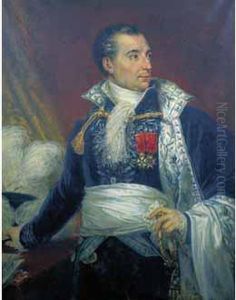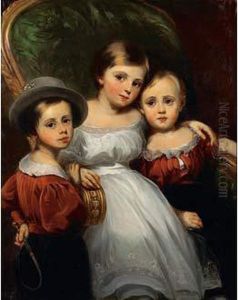Jean Hilaire Belloc Paintings
Jean Hilaire Belloc was a French painter, born on November 23, 1786, in Nantes, France. He is less widely known than some of his contemporaries but was an artist who contributed to the French art scene during a period that spanned the late 18th and early to mid-19th centuries. Belloc's life and career were set against the backdrop of a turbulent period in French history, which witnessed the French Revolution, the rise and fall of Napoleon, and the various political upheavals that followed.
Belloc trained as an artist in Paris under the tutelage of Jacques-Louis David, who was the leading French painter of the neoclassical movement. This training would have provided Belloc with a solid foundation in the neoclassical style, emphasizing clarity of form, sober colors, and the strong idealization of the human figure. Throughout his career, Belloc worked predominantly as a portraitist. His style was characterized by its elegance and a focus on the fine details of his subjects' attire and surroundings, capturing the nuances of the social and cultural life of his era.
Despite his skill as a painter, Belloc did not achieve the same level of fame as some of his peers. His works were, however, appreciated by a clientele that valued the traditions of neoclassical painting. Belloc's portraits are notable for their precision and attention to the texture of fabrics and the subtleties of facial expression. Beyond portraiture, he also engaged in historical and religious subjects, although these works are less well-known.
Jean Hilaire Belloc's career spanned many changes in the French art world, including the shift from neoclassicism to romanticism. However, he remained relatively conservative in his style throughout his life. He exhibited at the Salon, the official art exhibition of the Académie des Beaux-Arts in Paris, which was the primary showcase for French artists to display their work and gain recognition.
Belloc passed away on August 2, 1866, in Hyères, France. While he may not be a household name, his works provide valuable insights into the neoclassical aesthetic and the social mores of his time. Today, Belloc's paintings can be found in various museums and collections, where they continue to be studied and appreciated by art historians and enthusiasts alike.

